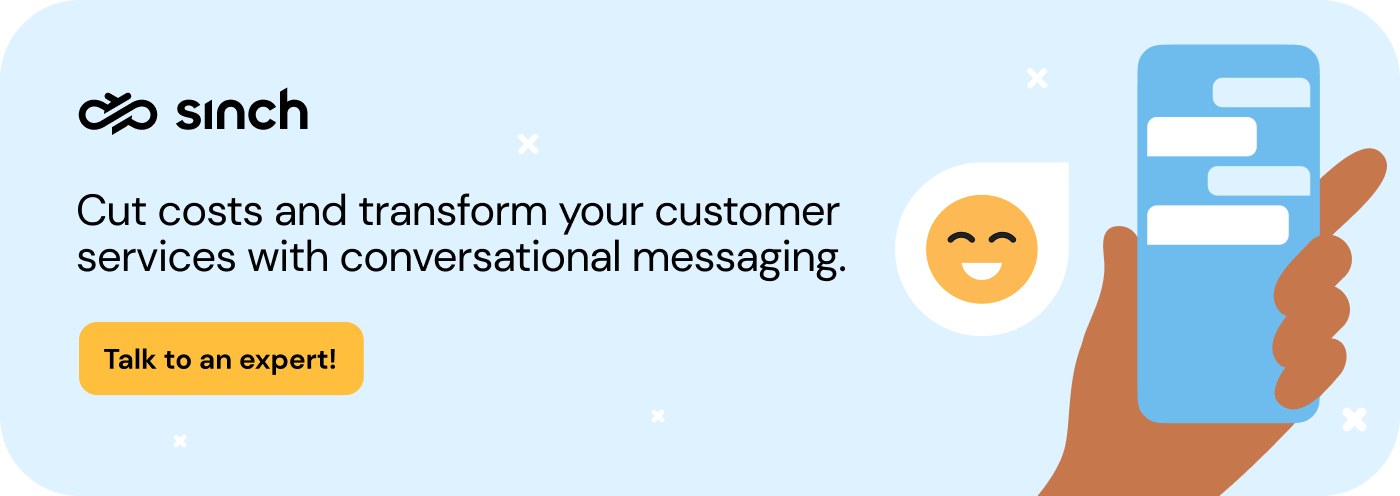Insights, Products
How to use chatbots in customer service successfully

Insights, Products

Great customer service pays off. It’s the best guarantee that your customers will come back and purchase your products or services in the future. And chatbots can be a big part of that. They can not only improve your customer service, but also save resources and make customers happier. Find out how to use chatbots in your customer service successfully.
No matter how great your products or service are, customers will always have questions or run into an issue. That happens to every business. However, how you handle these questions and complaints is what’ll make you stand out from your competitors.
Customers that have had a good experience with a company’s customer service are more likely to return in the future and recommend your company. According to Smart Karrot, 89% of customers will switch brands after a bad customer experience!
And when customers have had bad experiences, chances are they’ll leave unflattering reviews online or negative comments on social media about your business.
Investing in customer service also makes sense from a larger business perspective, as it’s up to eight times more expensive to gain a new customer than to retain an existing one.
In other words, high-quality customer service will improve your brand’s image, reduce costs, and increase sales. For most companies, none of this is new. However, what many are not aware of is how much chatbots can help you improve your customer service.
While it’s obviously important to help your customers, processing numerous customer inquiries can become an overwhelming resource problem for companies. In addition, your service team ends up answering the same questions over and over again. This is tedious, tiring, and time-consuming, and ultimately frustrating for customers and your team.
When asked to describe their biggest problems in handling clients queries, customer agents mostly named organizational challenges, such as finding the right answer in the system or switching between apps.
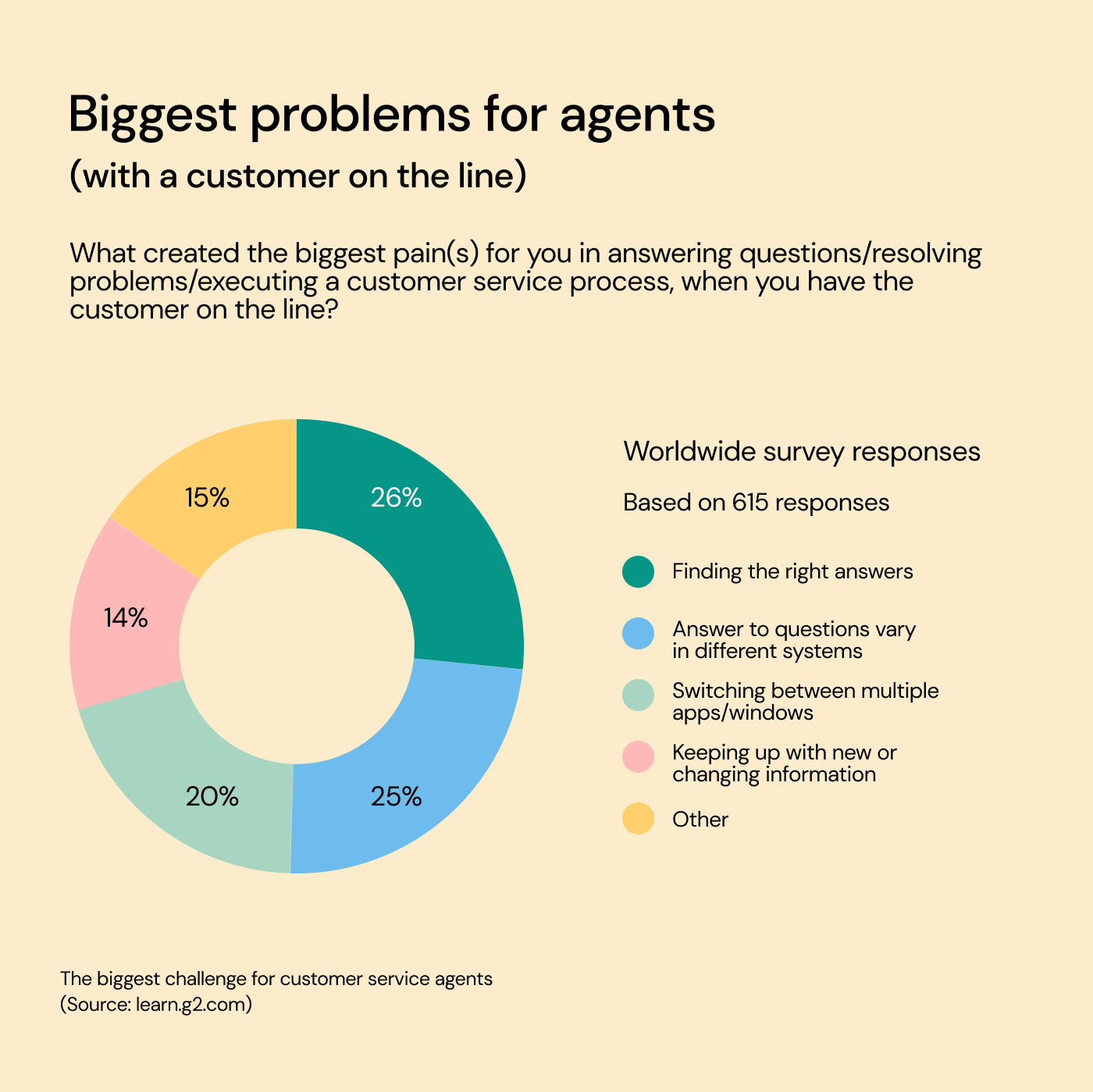
These are exactly the kind of tasks at which chatbots exceed. Chatbots are extremely efficient at answering frequently asked questions, finding relevant data very fast, and accessing information in a company’s system.
Chatbots are therefore becoming extremely important for companies
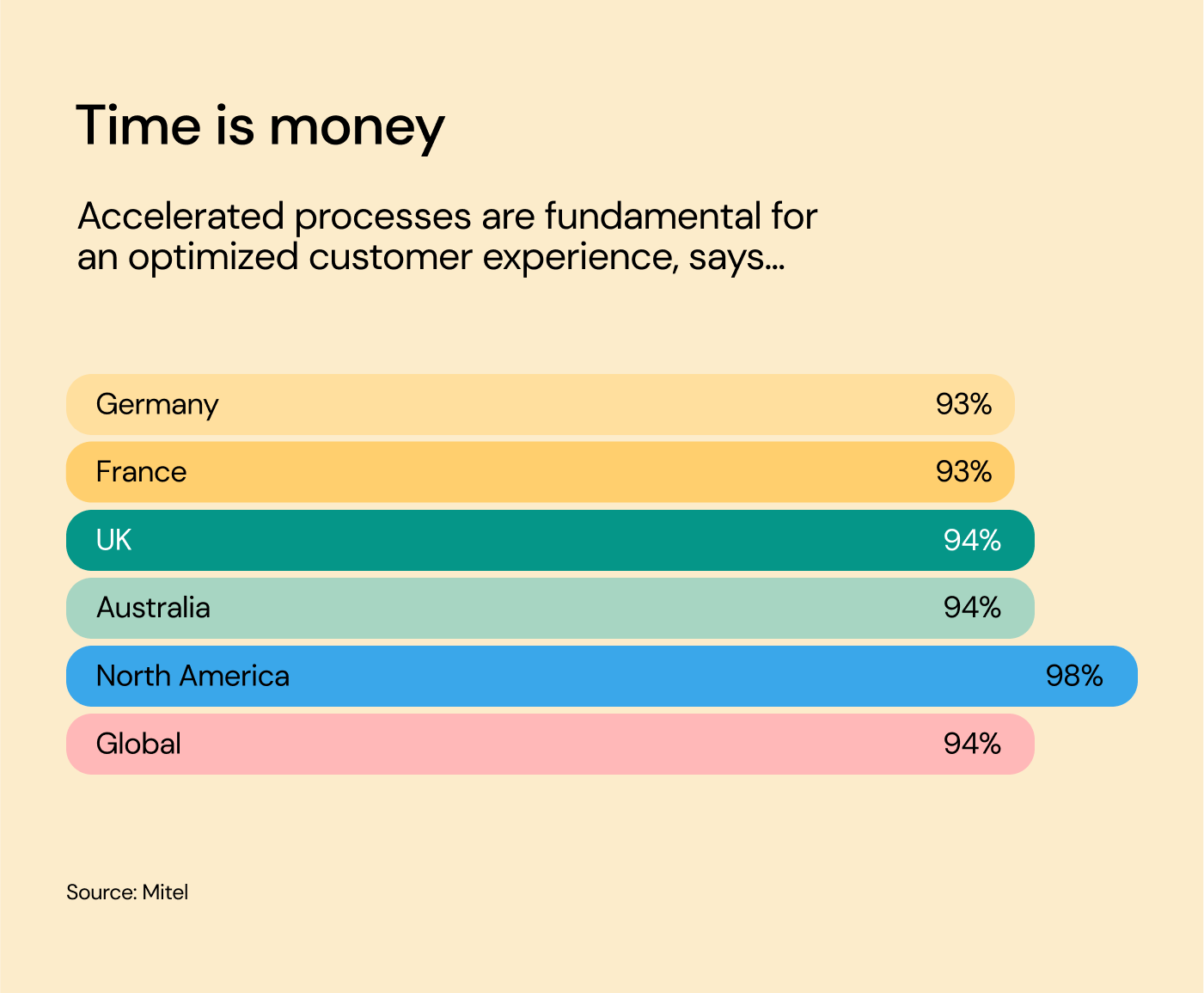
Recent data also shows that, against popular belief, customers actually respond positively to chatbots.
It’s important to note that while chatbots can greatly improve your customer service, they don’t replace human agents.
Last year, our customers were able to have 45 million of their questions answered by a chatbot. This saves resources that can certainly be used in better ways, such as improving the capacity to answer more complicated questions and customer demands.
However, this doesn’t mean that chatbots are replacing employees. Instead, they help with routine tasks and collect important data at the beginning of interactions. This actually helps customer service and makes it better.
Using a professional chatbot integration solutions offers many possibilities for improving your customer service.
For a lot of companies, a simple chatbot that you can set up in minutes with a chatbot builder is often all they need. A simple chatbot can be used relatively easily in first-level support to answer basic questions. In this scenario, you can also understand the term chatbot as “intelligent auto-responding tool”.
For more complex questions, a chatbot can be used to sort and classify the questions. When the chatbot has figured out exactly what kind of problem it is, the correct employee can take a look.
BMW is a great example for using a customer service chatbot as first-level support. Before implementing a chatbot, BMW was handling their high level of incoming customer queries at their Munich location through a costly call center. This wasn’t only expensive, it also delayed the communication process as agents had to constantly struggle to find the right customer information in BMW’s system.
With the help of a simple chatbot, BMW was able to answer 3,800 requests per month.
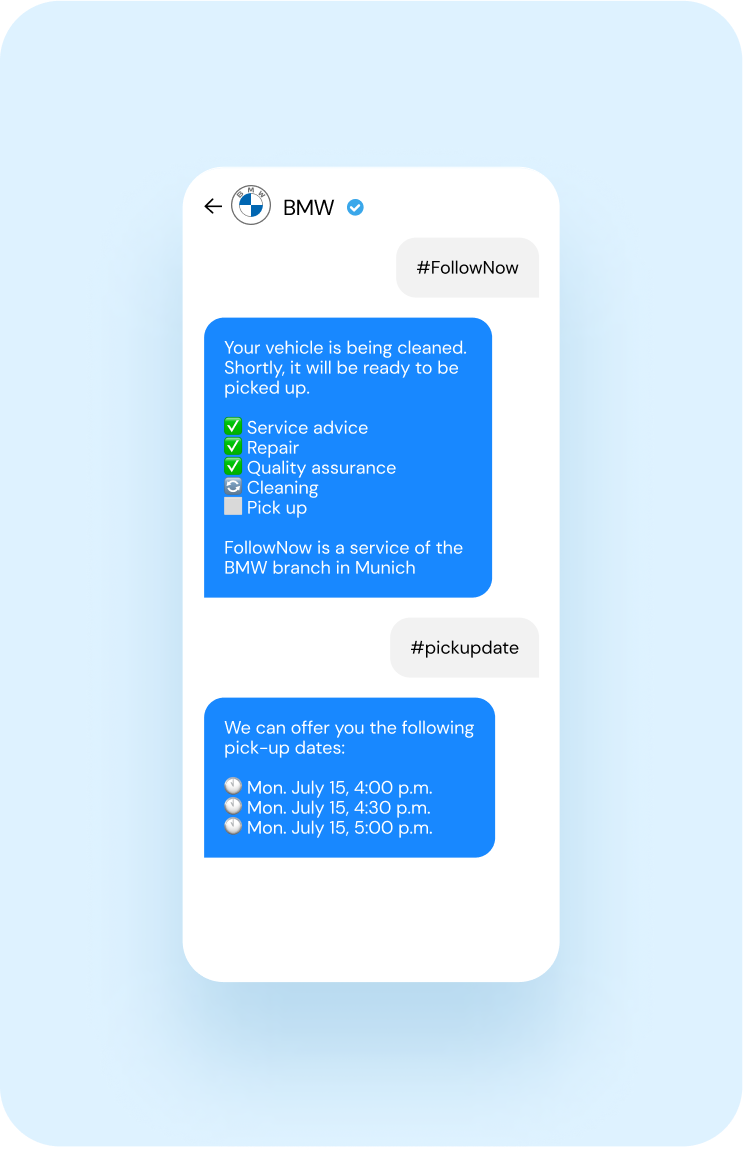
Currently, their chatbot is able to answer about 80% of their customer inquiries.
Basic chatbots can also go beyond customer service support, and help your sales team to qualify leads, while at the same time reducing the work load for your service team.
With some pre-programmed questions, it is easy for chatbots to find out very fast what a customer wants. Do they have a complaint about the product? Then, they’ll direct the customer to the service team. Do they have a question about a product the want to buy? In that case, it makes more sense to forward these leads to your sales team.
It’s actually a very simple solution that solves a lot of problems.
The women’s sports clothing company, Women’s Best, for instance, uses a bot to pre-qualify leads. If an interested customer is detected, they are passed on to a sales rep, which also makes for a really smooth customer experience.
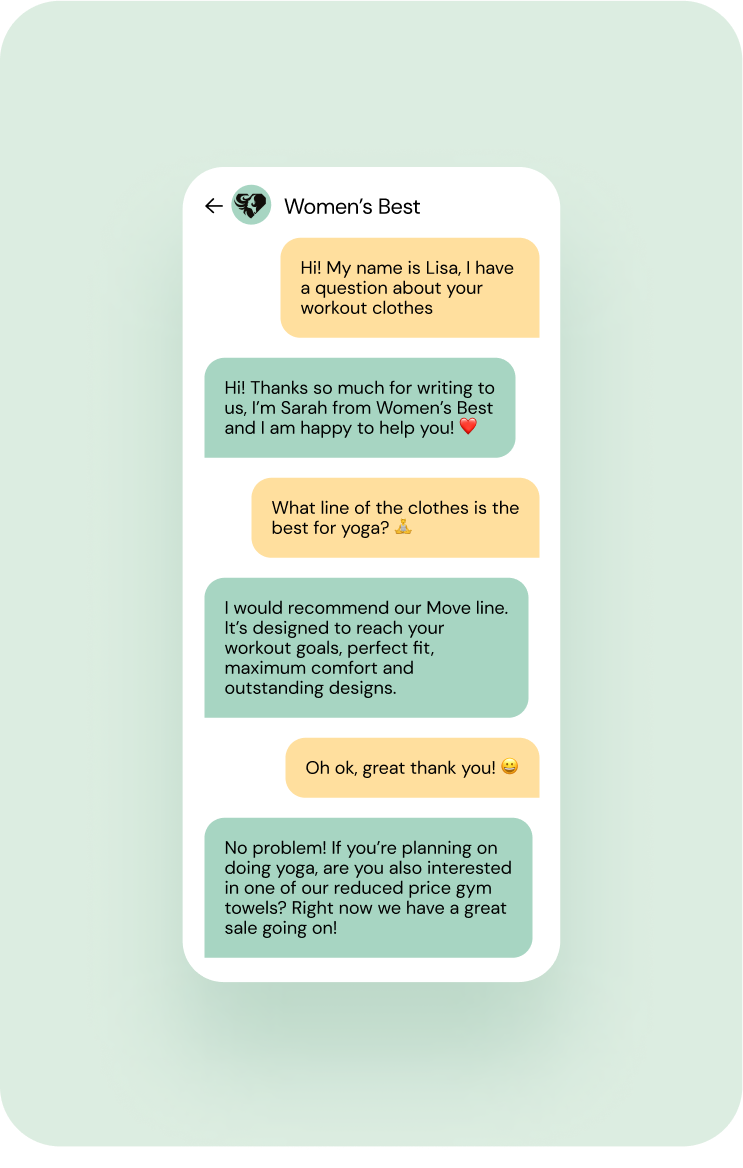
While the previous examples show how much a simple chatbot can do for your company, there are obviously also use cases where you might want a more sophisticated bot.
Do you own a restaurant that wants to use a bot to take orders? Maybe you’re running an e-commerce company that wants to guide customers through a bot-led payment process. AI-based chatbots that use high-quality NLP training, like chatbots designed by Sinch Chatlayer, are a good choice because they are able to engage in more complex dialogues with your customers.
The Brazilian food delivery giant, iFood, for example, used Sinch Chatlayer’s conversational AI chatbot to lead an online onboarding process for new delivery drivers, and answer their most frequent questions. Through the automation, iFood was able to achieve a 91% satisfaction rate in their delivery staff onboarding, and a reduction of 70% in delivery service costs.
Companies are slowly recognizing that authentic conversations are the key to the customer’s heart.
Clients aren’t convinced any more by receiving thousands of ads or e-mails from a company. A good brand attracts a client towards them, instead of pushing them.
Matthias Mehner, Vice President Global Marketing at Sinch
This requires talking to them on a one-on-one basis, listening to their concerns and wishes, and solving their issues in an efficient manner. Conversational AI chatbots can be a great first approach to a more engaged conversation.
Bots are very good at gathering data, and if the conversational design is of high-quality, the bots will also be able to have a natural flow of conversation with a client, understanding their needs. This can greatly improve the customer service experience, and the image of your brand.
Foyer, a leading insurance and wealth management company was able to boost its customer service with a Sinch Chatlayer bot. The bot was not only able to handle requests 24/7, but also increased user satisfaction with personalized messaging.
When thinking about introducing a chatbot for your customer support, you not only need to define a use case, you also need to figure out where you want to implement it. Depending on your business, your customers’ needs, and the channels of communication you use, there are different options.
A lot of companies decide to implement a customer service bot on their website as a live chat. The advantage is that customers are already used to finding chatbots there, and will know how to use the tool intuitively. It also makes the chatbot service very visible and accessible to a lot of different customers.
The downside is that few customers contact companies with complaints or questions through their website. Instead, they tend to use the communication channels they are using for private conversations, like WhatsApp or the Facebook Messenger, because it’s their favorite way to communicate.
So, for your service agents, it might only slightly reduce their workload as they will still get incoming queries from multiple other channels.
If you offer an app-based service, integrating a chatbot directly in the app is also a good opportunity to meet customers where they want to communicate with you. This does require IT knowledge, though, and can be more costly than including a chatbot in a messaging app.
And of course you need to have an app in the first place. This solution is better for bigger companies that have the resources to create an app around their offers.
If your customers contact you through messaging apps, integrating a chatbot here is a clever solution for making the customer experience smoother, and stick to your customers’ favorite communication channels.
Some businesses are already using the free versions of WhatsApp, Viber, or Instagram to talk to their customers. However, these don’t support chatbot integrations, and there’s typically no easy way to connect your CRM. So, you’ll have to use the respective business versions like the WhatsApp Business API, Viber for Business, etc.
Only with these, you get access to the APIs where you can set up your chatbots. Of course, this requires technical skills. The alternative is to work with a ready-to-go software from a Business Solution Provider like Sinch Engage. Here, you can set up multiple service channels, manage all incoming messages from one central inbox, connect your CRM system, and there’s even a bot builder included where you can build your own bot in minutes (no coding skills required).
And for more information about how you can elevate and transform your customer service even further, click on the box below for a deep dive into conversational care.
